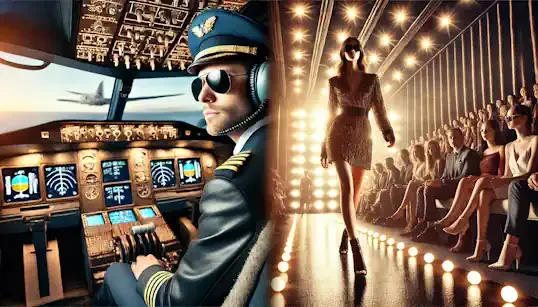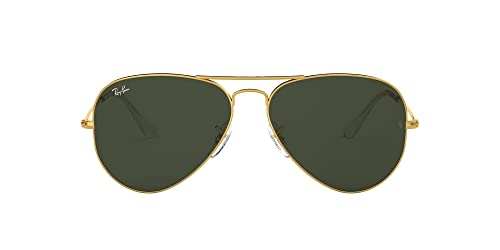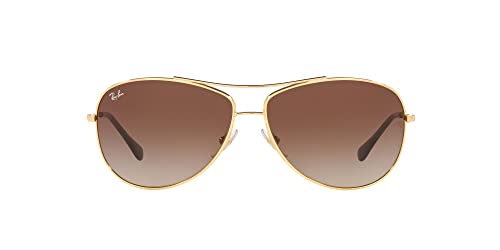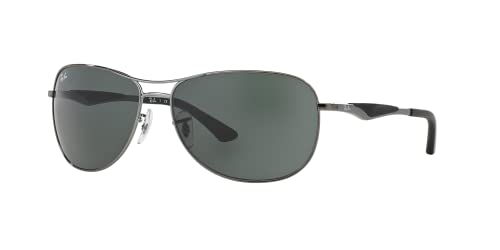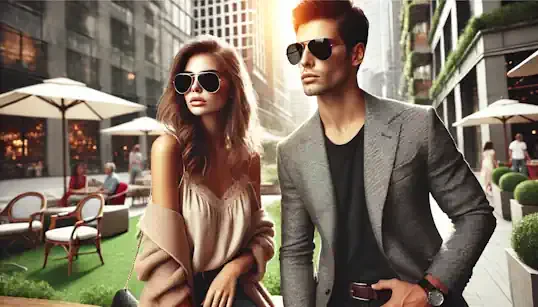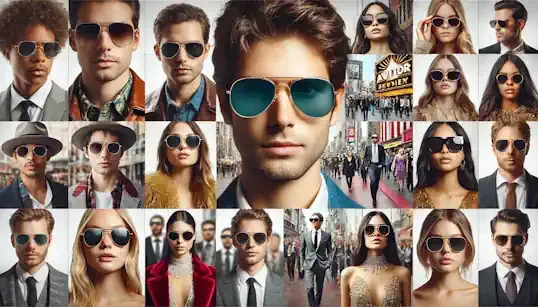From cockpit to catwalk. It’s a phrase that conjures images of stark contrasts: utilitarian functionality versus flamboyant artistry, life-or-death stakes against the carefree pursuit of style. And yet, somehow, these two seemingly disparate worlds have collided, or perhaps, more accurately, intertwined, in the story of one of fashion’s most enduring and iconic accessories: aviator sunglasses. Imagine a grainy photograph, a pilot squinting against the blinding glare from a sun-drenched sky, leather helmet snug, and perched upon his nose, a pair of large, dark-lensed spectacles. Now, picture a contemporary magazine spread, a supermodel lounging poolside, effortlessly cool, the same distinctive shape of sunglasses reflecting the azure water, paired not with flight gear, but with designer swimwear and a diamond-studded watch. How did we get from point A to point B? How did an object born from sheer necessity, designed for the perilous skies, become a symbol of effortless chic, gracing the faces of celebrities, gracing the pages of Vogue, and becoming a ubiquitous fashion staple across the globe? This is the untold story, the surprising and multifaceted journey of aviator sunglasses, a tale that reveals not just the evolution of an eyewear design, but the fascinating dance between function, culture, and the ever-shifting landscape of style.
To understand the genesis of aviator sunglasses, we must first understand the problem they were designed to solve: the relentless and often debilitating glare faced by pilots in the early days of aviation. Picture the open cockpits of biplanes, soaring thousands of feet above the ground, bathed in unfiltered sunlight. Imagine the intense reflections bouncing off clouds, snow-capped mountains, or the shimmering surface of the sea. For pilots navigating these early flying machines, this wasn’t merely an inconvenience; it was a serious impediment to vision, impacting their ability to read instruments, spot landmarks, and, most critically, maintain situational awareness, a vital component for safety and success, and often, survival. The early solutions were rudimentary, ranging from simple goggles to tinted lenses that offered limited protection. But as aviation technology advanced and flight altitudes increased, the need for a more effective and specialized form of eye protection became undeniably crucial. This wasn’t about looking stylish; it was about clear vision in a challenging environment, a functional imperative directly linked to pilot performance and, in many cases, to life itself. The skies were demanding a solution, and the answer was about to emerge from the meeting point of military necessity and optical ingenuity.
Enter Bausch & Lomb, a name synonymous with optical precision, and the U.S. Army Air Corps. In the 1930s, recognizing the critical need for improved pilot eyewear, the Air Corps commissioned Bausch & Lomb to develop sunglasses that would offer superior protection and clarity for pilots in flight. The requirements were stringent and specific, driven by the demands of the cockpit. The lenses needed to be large, providing maximum coverage to shield the entire field of vision from glare and harmful UV rays. They had to be dark enough to significantly reduce intense sunlight but also allow for sufficient visual acuity to read instruments within the cockpit and spot potential hazards outside. Early iterations often featured a green tint to the lenses, designed to absorb yellow light, which was a significant component of glare. The frames had to be lightweight and comfortable enough to be worn for extended periods during long flights, often in conjunction with flight helmets and oxygen masks. And crucially, the shape of the lenses, which would eventually become the signature "aviator" or "teardrop" form, was designed not for aesthetics, but for maximizing the field of downward vision, essential for pilots scanning the ground below. This was function dictating form in its purest sense. The initial designs were driven entirely by practical needs, born from scientific understanding of optics and the rigorous demands of military aviation. The result was not just a pair of sunglasses, but a precision instrument, a piece of essential flight gear as vital as a navigation chart or a working altimeter.
The early adoption of these newly designed sunglasses was, unsurprisingly, within the military. Images from the era depict pilots, both American and later those from allied nations, sporting the now-familiar aviator shape. These weren't just accessories; they were part of the uniform, badges of honor, symbols of skill and bravery in a then-nascent and still somewhat romanticized field of endeavor. The aviator sunglasses became instantly associated with the daring pilots who wore them, men who were pushing the boundaries of technology and human endurance in the skies. They weren't merely shielding their eyes; they were embodying a new kind of hero, the airman, the pilot, the figure who commanded the skies. The practicality of the sunglasses was undeniable; pilots reported significantly reduced eye strain and improved visibility in challenging conditions. Word spread throughout military aviation circles, and the aviator sunglasses, in their initial, purely functional form, became a standard piece of equipment for pilots, solidifying their connection to the military world and imbuing them with the early seeds of a certain type of "cool"—the cool of competence, of capability, of mastering a challenging environment. They were, at this stage, purely a tool of the trade, but a tool worn by individuals who were increasingly becoming figures of public fascination and admiration.
The end of World War II marked a turning point in the story of aviator sunglasses. With demobilization came a massive surplus of military equipment, including, of course, those very sunglasses designed for pilots. Suddenly, aviator sunglasses, once the exclusive domain of military airmen, became readily available to the civilian population. Initially, their appeal was rooted in their inherent practicality. For returning veterans, they might have been a familiar and trusted item, a reminder of their service. For civilians, they offered the promise of robust eye protection, ideal for outdoor activities, driving in bright sunlight, or working in glare-intensive environments. Their large lenses and sturdy construction made them well-suited for practical applications, a far cry from the delicate and often less effective eyewear available at the time. But beyond mere practicality, something else began to percolate in the public consciousness. These sunglasses, still bearing the aura of their military origins, carried with them a certain cachet, an association with adventure, competence, and the undeniable coolness of military pilots. They weren’t just sunglasses; they were sunglasses worn by heroes.
Beyond veterans and those seeking purely practical eyewear, aviator sunglasses began to attract a different kind of user: outdoorsmen, adventurers, and those seeking to project a certain image of rugged competence. Hunters and fishermen found their large lenses and glare-reducing properties ideal for spending long hours in the sun. Motorists appreciated their ability to cut down on driving glare. And beyond their functional benefits, there was a growing awareness of the “look” of aviators, a subtle but undeniable shift from pure utility towards a nascent sense of style. This wasn't the "catwalk" yet, but the seeds were being sown. The association with military pilots, with their perceived bravery and skill, began to translate into a more general image of ruggedness and competence. Early examples of this stylistic shift can perhaps be seen in figures who embodied these ideals: outdoorsmen portrayed in advertisements, adventurers written about in magazines, and even early Hollywood actors playing military roles who might have started adopting aviators in their off-screen lives. While not yet high fashion, aviator sunglasses were beginning to shed their purely utilitarian skin and take on a new layer of meaning, a connection to a certain kind of "cool" that was rooted in their military origins but was starting to broaden and resonate with a wider public. The purely functional object was starting to subtly transform into something more.
But it was Hollywood that truly ignited the stylistic transformation of aviator sunglasses. Cinema, with its power to shape perceptions and create cultural icons, took flight with the aviator look, literally and figuratively. Think of classic war films, the kind that glorified heroism and adventure. Pilots on screen, portrayed by charismatic actors, became synonymous with aviator sunglasses. These weren't just functional props; they were integral to the visual language of heroism, adding an air of mystery, competence, and undeniable cool to the characters. Consider films depicting brave fighter pilots, courageous bomber crews, or even maverick test pilots pushing the boundaries of aviation. The aviator sunglasses, in these cinematic portrayals, weren't just eye protection; they were visual shorthand for a certain type of masculinity, a certain type of bravery, a certain type of effortless coolness. Actors like Steve McQueen, in films like “The Great Escape” and “Bullitt,” further cemented this image, often wearing aviators not just on screen, but off-screen as well, blurring the lines between character and persona, between cinematic cool and real-world style.
Beyond war films, aviator sunglasses began to appear in a wider range of cinematic genres, further expanding their stylistic reach. Think of police procedurals, action thrillers, and even romantic dramas. Aviators became associated with detectives, rebels, and even sophisticated leading men, adding a layer of mystery, authority, or just plain style to the characters. Consider actors like Robert De Niro in “Taxi Driver,” or Tom Cruise in “Top Gun” – films that, decades apart, both prominently featured aviator sunglasses and further cemented their association with cool, albeit different shades of it. “Top Gun” in particular, released in the 1980s, was a cultural phenomenon, a blockbuster that single-handedly reignited interest in aviator sunglasses on a massive scale. The image of Tom Cruise as Maverick, the rebellious and charismatic pilot, clad in his flight suit and aviator sunglasses, became instantly iconic, driving sales of aviator sunglasses through the roof and catapulting them into the mainstream fashion consciousness in a way that no advertisement could ever achieve.
The power of cinema was amplified by the embrace of aviator sunglasses by celebrities off-screen. Actors, musicians, and public figures began to adopt aviators as part of their personal style, further blurring the lines between on-screen image and real-world fashion. Paparazzi shots of celebrities sporting aviators became commonplace in magazines and tabloids, further disseminating the style to the masses. From rock stars to pop icons, from Hollywood legends to rising stars, aviator sunglasses became a ubiquitous accessory, a symbol of effortless cool, a way to project an image of mystery, sophistication, or rebellious nonchalance. This wasn't just implicit endorsement through cinematic portrayals; this was explicit adoption by individuals who were themselves style icons, individuals whose fashion choices were meticulously scrutinized and emulated by millions. The perception of aviator sunglasses was shifting dramatically. The primary association was no longer with function or military necessity; it was now firmly rooted in style, in coolness, in celebrity culture. The object designed for the cockpit was rapidly becoming a must-have fashion accessory.
And so, the stage was set for the final ascent: from celebrity accessory to catwalk sensation. The world of high fashion, always eager to adopt and reinterpret cultural trends, embraced aviator sunglasses with open arms. Major fashion designers began to incorporate aviators into their runway collections, not just as practical eyewear, but as integral elements of their overall aesthetic. Suddenly, aviator sunglasses were not just being worn by pilots and celebrities; they were gracing the pages of Vogue, Elle, and Harper’s Bazaar, paired with haute couture, showcased in high-fashion editorials, and presented as the epitome of modern chic. Designers didn’t just replicate the original military design; they reimagined it, experimenting with different materials, frame shapes, lens colors, and embellishments. Gold frames, silver frames, tortoiseshell frames, brightly colored lenses, mirrored lenses, even jeweled frames – the aviator shape became a blank canvas for creative reinterpretation, pushing the boundaries of the original functional design into the realm of pure fashion artistry. High-fashion brands launched their own lines of aviator sunglasses, transforming a utilitarian object into a luxury item, complete with designer logos and premium price tags.
What’s remarkable about the journey of aviator sunglasses into high fashion is their versatility. They didn’t become pigeonholed into a single fashion niche; instead, they proved remarkably adaptable, seamlessly fitting into a wide range of styles and trends. From classic and sophisticated to edgy and rebellious, from retro-inspired to ultra-modern, aviator sunglasses could be styled to complement virtually any look. They became a genderless fashion staple, equally at home on men and women, transcending traditional gendered fashion boundaries. Their enduring appeal lies, perhaps, in this very versatility, in their ability to be both classic and contemporary, both understated and statement-making. They offer a touch of effortless cool, a hint of rebellion, a dash of sophistication, all while remaining fundamentally functional eyewear.
Even in the 21st century, aviator sunglasses continue to thrive, not as a fleeting trend, but as an enduring legacy. Contemporary designers and brands continue to reinvent the aviator silhouette, experimenting with new materials, technologies, and stylistic flourishes, ensuring that the design remains relevant and desirable in a constantly evolving fashion landscape. From classic metal frames to bold acetate designs, from polarized lenses to gradient tints, the modern aviator market is a diverse and dynamic space, reflecting the enduring appeal of this iconic eyewear. And yet, despite all the reinventions and reinterpretations, the core identity of the aviator remains recognizable, still carrying with it echoes of its functional military origins, whispers of Hollywood glamour, and the undeniable aura of effortless cool that has propelled it from the cockpit to the catwalk.
So, what is the “untold story” of aviator sunglasses? Perhaps it’s the unexpected power of functionality to become fashionable, the surprising way in which a purely utilitarian object, born from necessity, can transcend its original purpose and become a symbol of style, coolness, and cultural iconography. Or maybe it’s the testament to the human desire to imbue objects with meaning, to project our aspirations and ideals onto even the most practical of items. The aviator sunglasses, in their improbable journey, have become more than just eye protection; they are a cultural artifact, a visual shorthand for heroism, coolness, and timeless style. From the perilous skies to the glamorous runways, their story is a fascinating reminder that sometimes, the most iconic designs are born not from aesthetic ambition, but from the simple, unwavering pursuit of functionality. And yet, in the unpredictable and often whimsical world of fashion, even functionality can unexpectedly, and undeniably, take flight.
